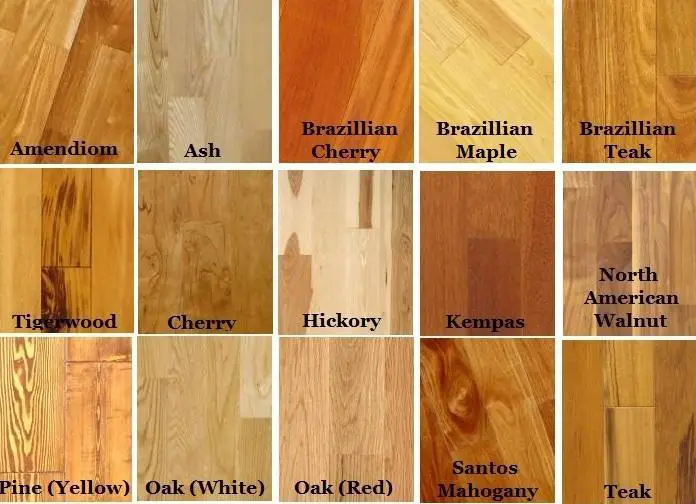Remember that time you spilled red wine on your beautiful hardwood floors? You probably panicked, thinking the stain would be permanent. But then, just a quick wipe with a damp cloth, and poof! The stain disappeared, leaving your floors pristine. That’s the magic of a proper sealant. It’s the invisible superhero that protects your hardwood floors from spills, scratches, and everyday wear and tear. But how do you know if your floors are actually sealed?

Image: www.woodfloorscleaner.com
That’s the question we’re diving into today. Whether you’re a new homeowner or a seasoned DIYer, understanding the signs of a sealed floor is crucial for maintaining the beauty and longevity of your hardwood investment. So, let’s get started!
The Importance of Sealed Hardwood Floors
Hardwood floors are a classic choice for their timeless elegance and durability. But even the toughest wood needs a protective layer to withstand the daily grind. This is where sealants come in. A sealant acts as a barrier between the wood’s surface and the outside world. It shields against moisture, spills, stains, scratches, and even the fading effects of sunlight.
Not only does a sealant enhance the look of your floors by bringing out their natural colors and grain patterns, it also extends their lifespan. So, if you want your hardwood floors to shine bright for years to come, understanding whether they are sealed is essential.
How to Tell If Your Hardwood Floors Are Sealed
Checking for a sealant isn’t as complicated as you might think. Here are several telltale signs to look out for:
1. The Water Test
This is a simple and reliable method, but use caution. Choose a hidden corner or spot on your floor where you can test. Carefully drop a few drops of water on the floor and observe what happens.
- Sealed Floors: The water will bead up on the surface for several seconds before slowly soaking in.
- Unsealed Floors: The water will immediately penetrate the wood surface, leaving a dark mark behind.

Image: biallworld.web.fc2.com
2. The Feel Test
Run your hand gently over the surface of your floor.
- Sealed Floors: You’ll feel a smooth, slightly slick texture.
- Unsealed Floors: The wood surface will feel rougher and more porous.
3. The Appearance Test
Observe the overall look of your floors.
- Sealed Floors: The wood will have a consistent, uniform appearance with even color and a subtle sheen.
- Unsealed Floors: The wood may appear dull and uneven, with noticeable variations in color and texture. Additionally, you might also spot water damage, scratches or dents more easily.
4. The History Check
If you’re unsure about the sealing history of your floors, it’s a good idea to check with the previous owner or contact the builder if you’re in a newer home. They may have records or remember the details of any floor treatments.
Key Factors Influencing Sealant Longevity
The lifespan of a sealant depends on several factors, including the type of sealant used, the quality of the application, and the amount of traffic your floors receive.
1. Type of Sealant
Polyurethane sealants are the most common and offer good protection against moisture, scratches, and scuffs. These are usually found in oil-based or water-based formulations. Oil-based polyurethane offers added durability, while water-based options are easier to clean up. Other types, such as acrylic or wax, may offer different levels of protection.
2. Application Techniques
Proper application technique is crucial for obtaining a long-lasting seal. It’s not just about spreading the sealant evenly; it’s also about ensuring proper drying time between coats and using the correct tools for sanding and sealing.
3. Foot Traffic
High-traffic areas, like entryways and hallways, experience more wear and tear, requiring more frequent resealing.
Tips for Maintaining Your Sealed Hardwood Floors
Now that you know how to determine if your floors are sealed, let’s move on to maintaining that protective barrier.
1. Regular Cleaning
Sweep or vacuum your floors regularly to remove dirt and debris that can scratch or dull the finish. You can also use a damp mop with a mild cleaner specifically designed for hardwood floors. Avoid harsh chemicals, as they can damage the sealant.
2. Protect From Moisture
As we mentioned, moisture is a sealant’s worst enemy. Avoid spills and promptly clean up any water or liquid spills. Use absorbent mats at entryways to help keep moisture and dirt out.
3. Protect From Scratches
Consider using furniture pads or felt protectors under furniture legs. Also, shoes can track in dirt and debris, so remove your shoes before entering your home, especially if you have high-traffic areas.
4. Professional Re-sealing
Depending on your floors and the wear and tear, a good rule of thumb is to get your floors professionally re-sealed every 3-5 years. This will help maintain their pristine condition.
Frequently Asked Questions
Q: How often should I re-seal my hardwood floors?
A: It depends on the type of sealant, the level of foot traffic, and any damage. You should have your floors re-sealed every 3-5 years.
Q: Can I re-seal my hardwood floors myself?
A: While DIY projects can be rewarding, re-sealing floors is a more intricate task. Consider calling a professional for optimal results, especially if you have any concerns about the process.
Q: What are the signs that my hardwood floors need re-sealing?
A: Watch for signs like a dull or faded finish, scuff marks that don’t easily wipe away, or the water test not beading up properly. These are all indicators that your floor sealant is starting to wear down and needs to be refreshed.
How Do You Know If Your Hardwood Floors Are Sealed
Conclusion
Knowing whether your hardwood floors are sealed is essential for maintaining their beauty and longevity. By following these tips and understanding the signs, you can ensure your floors stay protected and remain the centerpiece of your home for years to come. Do you have any questions about sealing your hardwood floors? Let’s chat in the comments below!





